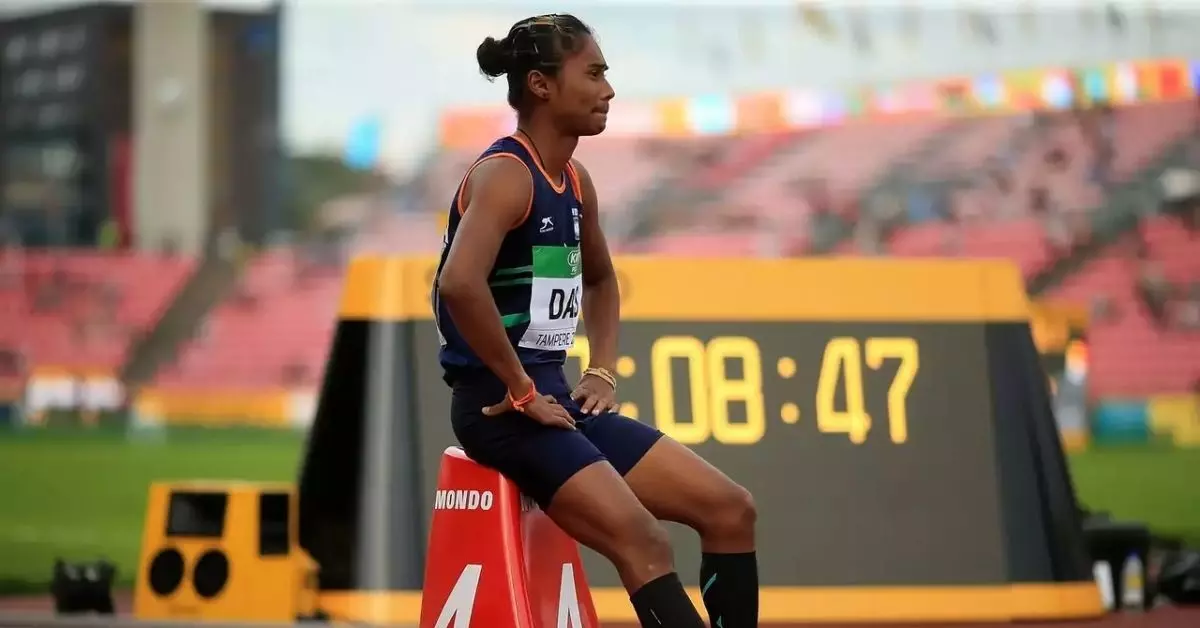Athletics
How does the scoring system work in athletics at the Olympics?
We'll discuss how athletics events are officiated and how the scoring system works at the Olympics?

Timing and distance are the two most paramount factors in Athletics [Source: Olympics]
Athletics will be a major focus during the Tokyo Olympics. The track and field events carry a lot of hype at every Olympics and several competitors battle each other in order to attain glory.
The track events at Tokyo Olympics will include short-distance, middle-distance and long-distance running. Hurdles race, marathon, steeplechase, as well as long-distance walk events, will also feature both men and women at Tokyo 2020.
The field events will include jumping events (long jump, high jump, triple jump, pole vault) and throwing events (shot put, hammer throw, discus throw, javelin throw). Besides, male and female athletes will also be able to take part in the Decathlon and Heptathlon.
Officials at Athletics Events
Quite often, athletics events take a lot of officials and judges to preside over events. These trained officials make sure that the athletes are following all rules and regulations and any failure to do so can result in disqualification.
The person who ensures a safe and fair start for all the track events is known as a starter. The starter's marshals are responsible for lining up the athletes competing in the correct order before the start of the event.
Timekeepers are volunteers who provide official times for all track athletes. However, the days of simple stopwatches at the Olympics are in the past, and in this era, the demands for accuracy and precision are insane. As a result, several high-tech timekeeping devices which include high-speed digital cameras, electronic touchpads, infrared beams, and radio transmitters are used.
Field event judges are in charge of assessing the conditions and letting the participants know when it is safe and secure to compete. They also do the measurement and recording work after jumps and throws. Place judges ensure the correct order of finishes after an athletic event.
In the track events, specific relay judges are assigned the responsibility to make sure that runners are in their correct lanes during change-overs and that they are within the change-over box.
Now that we know about the officials, let's take a look at how the scoring works in Athletics.
How does scoring work in Athletics?
Time and distance are the two most important parameters in athletics.
Track events – In sprint races where the events can last less than 10 seconds (100m dash), timing is paramount. Every facet of timekeeping, including the starting gun is electronic. The starting gun is connected to a speaker equidistant from every athlete in order to make sure they hear it at the same time. The electronic starting gun is sounded again only in the case of a false start.
Earlier, film cameras were used to record a photo-finish at the end of an extremely tight race. This is how the world record was broken during the 1960 Rome Olympics where Milkha Singh finished fourth in the 400m dash. Today, Scan O'Vision cameras are used which sends an electric signal whenever the runner's torso crosses the line to the timing console which in turn sends the times to the judges' consoles and an electronic scoreboard.
In marathons, where several people begin together and may end together, radio frequency identification tags are used which tracks every individual's frequency.
Jumping events – Jumping events are measured from the leading edge of the take-off board to the first mark made in the sand by the competing athlete. The distance can be measured down to the last centimetre and athletes are given three attempts. The athlete that jumps the furthest ends up winning.
Throwing events – Similar to jumping events, distance is also the priority in throwing events. They are measured from the leading edge of the throwing line to the first mark made in the ground by the given apparatus (shot, javelin, hammer, discus). Here as well, athletes are given three attempts and distance can be measured down to the last centimetre.
